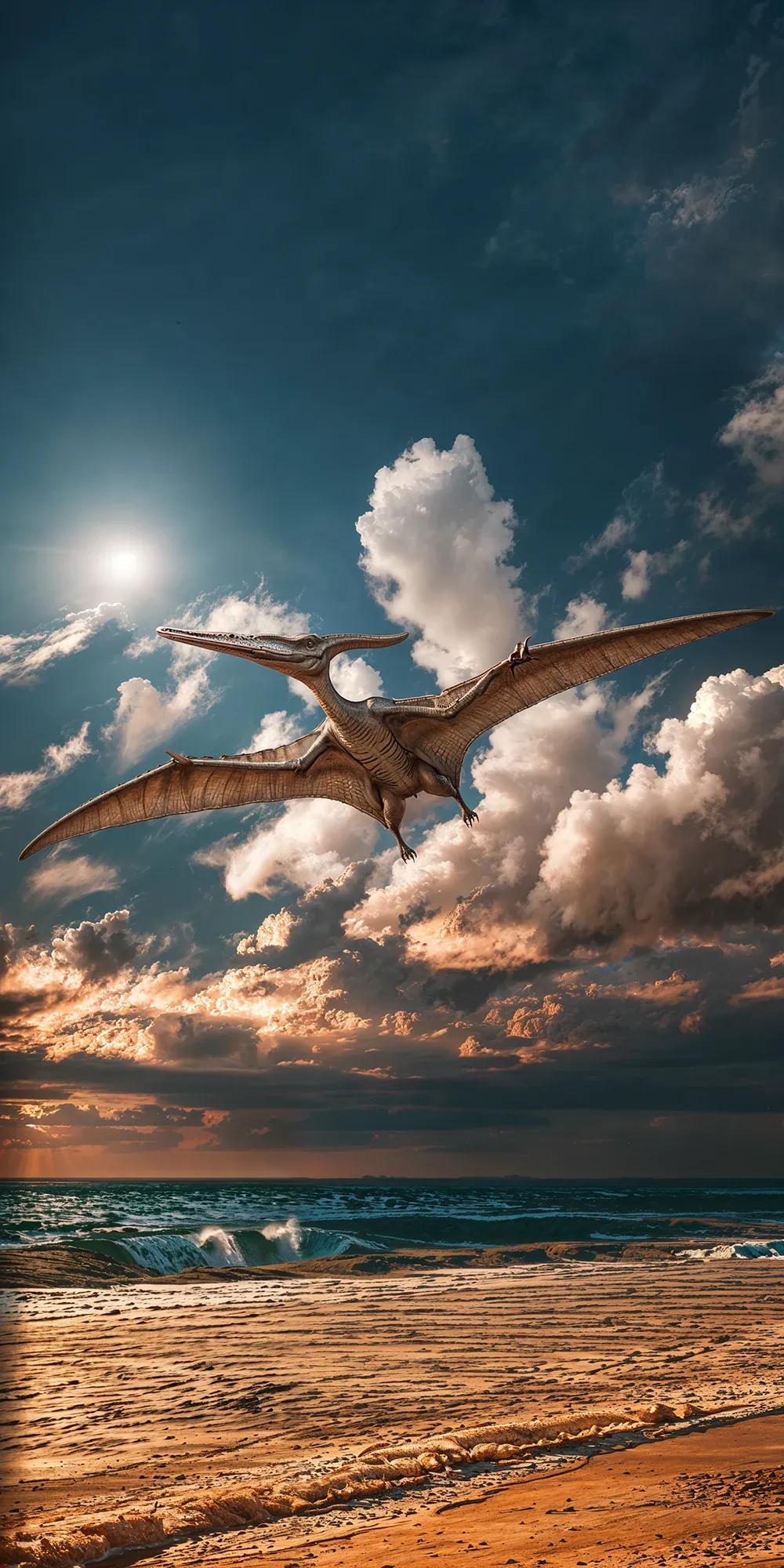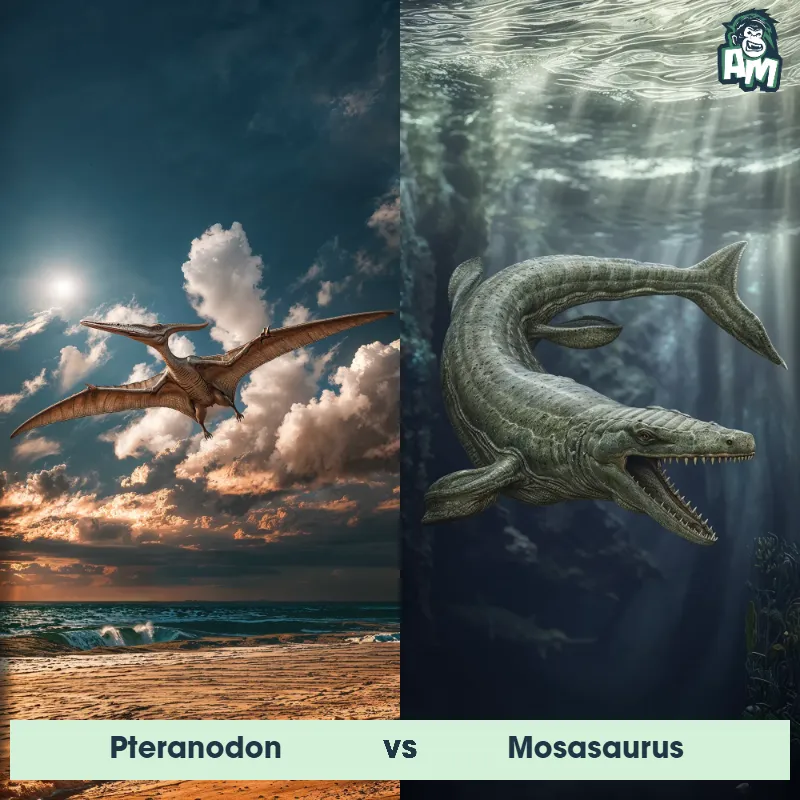The Pteranodon
The Pteranodon is a well-known flying reptile from the Late Cretaceous period. With a wingspan of over 20 feet, it was one of the largest pterosaurs. It had a long, toothless beak, a crest on its head, and sharp, curved claws. Pteranodons were well adapted for soaring and gliding through the skies in search of fish to eat.

| Pteranodon | |
|---|---|
| Size | Up to 30 feet wingspan (approx. 9 meters) |
| Weight | Up to 50 pounds (approx. 23 kilograms) |
| Speed | 25 mph (40 km/h) |
| Key Strength | Agility |
| Biggest Weakness | Fragile bones |
| Scientific Name | Pteranodon |
| Family | Pteranodontidae |
| Habitat | Coastal regions |
| Geography | North America |
| Diet | Fish |
| Lifespan | 7 years - 10 years |

The Pteranodon
The Pteranodon is a well-known flying reptile from the Late Cretaceous period. With a wingspan of over 20 feet, it was one of the largest pterosaurs. It had a long, toothless beak, a crest on its head, and sharp, curved claws. Pteranodons were well adapted for soaring and gliding through the skies in search of fish to eat.
Fun Fact: The name "Pteranodon" means "winged and toothless," reflecting its key characteristics.
| Pteranodon | |
|---|---|
| Size | Up to 30 feet wingspan (approx. 9 meters) |
| Weight | Up to 50 pounds (approx. 23 kilograms) |
| Speed | 25 mph (40 km/h) |
| Key Strength | Agility |
| Biggest Weakness | Fragile bones |
| Scientific Name | Pteranodon |
| Family | Pteranodontidae |
| Habitat | Coastal regions |
| Geography | North America |
| Diet | Fish |
| Lifespan | 7 years - 10 years |
Pteranodon Matchups
We use AI to simulate matchups between the Pteranodon and other animals. Our simulation considers size, strength, and natural predatory behaviors to determine the most likely outcome.

Can't find the Matchup you want?
Create Your Own MatchupPteranodon: Diet, Predators, Aggression, and Defensive Behaviors
What did Pteranodons eat?
Pteranodons were carnivorous creatures that primarily fed on fish. Their long, pointed beaks and sharp teeth were well-suited for catching and consuming fish, which made up a significant portion of their diet.
Did Pteranodons have any predators?
As adults, Pteranodons were large flying reptiles with impressive wingspans that made them less susceptible to predators. However, young Pteranodons were vulnerable to predators such as larger carnivorous dinosaurs like the Tyrannosaurus Rex.
Were Pteranodons aggressive?
Pteranodons were not known to be particularly aggressive animals. They typically focused on hunting for food and mating rather than engaging in aggressive behavior towards other creatures.
Did Pteranodons fight?
While Pteranodons did not engage in fights with other creatures for territorial disputes or dominance, they might have engaged in brief skirmishes for food or mates. These interactions were likely more about establishing dominance than causing harm.
How did Pteranodons defend themselves?
Pteranodons primarily relied on their ability to fly to defend themselves from potential threats. Their large wings allowed them to soar through the air quickly, making it difficult for predators to catch them. Additionally, their sharp beaks and teeth could be used as weapons if necessary.
What was the biggest weakness of Pteranodons in a fight?
Despite their impressive wingspan and ability to fly, Pteranodons had relatively fragile and lightweight skeletons compared to some other dinosaurs. This physical weakness could make them vulnerable to larger, more powerful predators in a fight.
Fun Fact: Pteranodons were built for flight, with hollow bones that made them lightweight but strong.
Fun Fact: Despite its large size, Pteranodon was a skilled flyer and is believed to have spent most of its life in the air, only landing to nest and feed.











